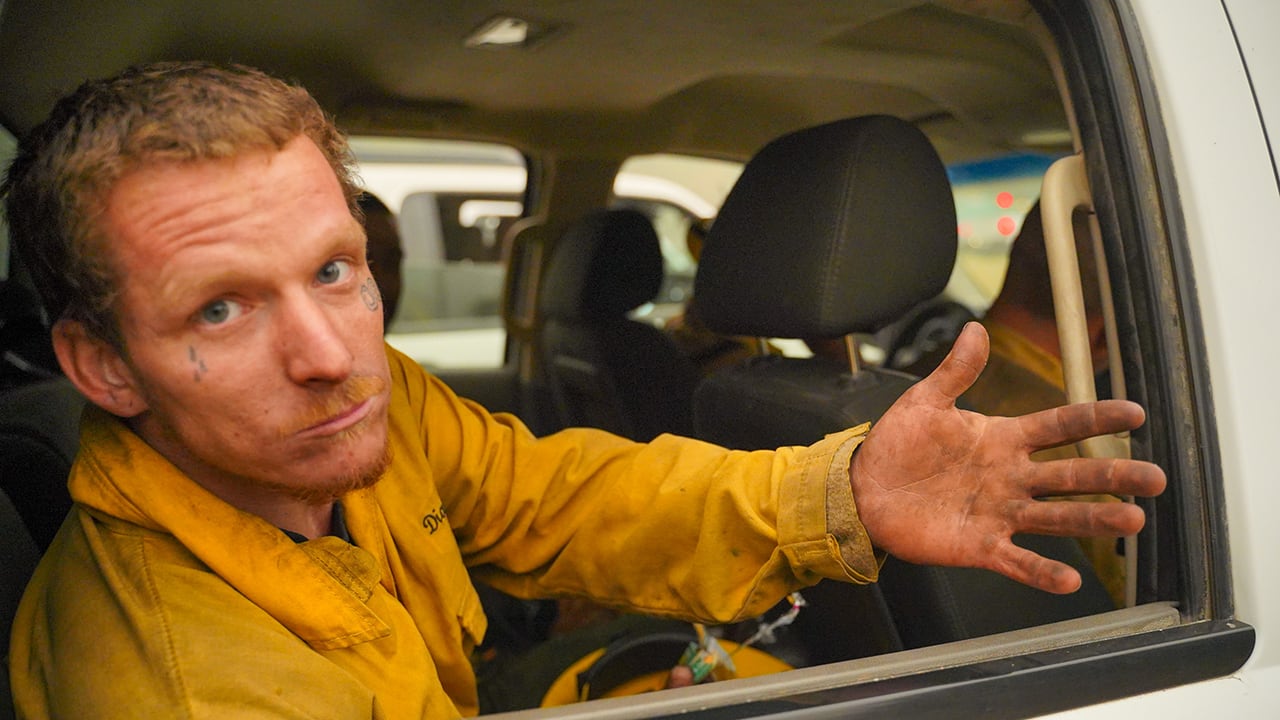South Dayhill Road, Estacada
6:44 pm Sept. 11
Four trucks barrel through the highway closures and down a country road. Inside are wildland firefighters. They're covered in soot from fighting fires inches from homes.
Many are smoking cigarettes while they wait for orders. Cody, one of the firefighters, calls it "smoke inhalation training."
The crew, from a contractor called Diamond Fire and Forestry, is a mix of long-term firefighting veterans and newcomers. Michael, who declines to give his last name, shows me his soot-covered hands: "We've been fighting them all day!"
It's his first day on the job—and his first time ever fighting fires. Next to him sits Joshua Duran, known as Duran Duran on the fire lines."We can go anywhere in the country," Duran says. "We went to Montana, lived in Washington, been to California very often. This is the first time being in Oregon in a few years, pretty crazy."

Duran points at the handful of U.S. Forest Service vehicles—the "hot shots," he calls them—parked a dozen yards away. Jim Beckwith sits at the wheel. They're awaiting orders when to pull out and let the next fire crew take over.
Beckwith says fires in the dense rainforests along the western slopes of Oregon's Cascade range are a different beast than most Western fires.
"We're from Northeast Washington," he says. "So we do get big fires up there, but we're in a little bit different fuel type. It's a little more open, dryer, fires move faster, but you get a big fire in this kind of timber, it's like a 100-year event."
As nearly a million acres of Oregon burned in the past week, I drove toward the blazes, spending two days with the dazed and displaced residents of Clackamas and Marion counties. Read the next story.
